On April 23rd, about a week after the fire at Notre-Dame in Paris, Mathieu Lehanneur unveiled his plan for a new spire for the cathedral: a gleaming 100m flame, made of carbon fibre and covered in gold leaf, that would be a permanent reminder of the tragedy.
The designer's suggestion, first made on Instagram, did not go down very well. Some even called it blasphemous, Lehanneur says. He meant the idea as a simple provocation, to show the absurdity of rebuilding the spire as it was in the 19th century. But, he adds, he has since become serious about the plan. "A few days after I put it online I thought, Why not?" Lehanneur says. "The flame is actually a very strong symbol in the Bible... It's powerful."
Lehanneur’s plan is among dozens that have been made public since the fire, most of them produced by small architectural and design firms. They range from the madcap (an architectural folly that looks like a spaceship has landed on the cathedral) to the modern (a project that would turn the roof into a greenhouse).
The beam of light from the 'lighthouse for lost souls' would fulfil the aim of the architects of Gothic cathedrals around Europe who wanted to touch heaven with their spires
Many of the designs are glass towers. But one, from Vizum Atelier, a design firm based in Slovakia, would see a beam of light shoot up from a new spire into the sky. It would be a "lighthouse for lost souls", according to Michal Kovac, an architect at the firm. It would fulfil the aim of the architects of Gothic cathedrals around Europe who wanted to touch heaven with their spires, he says.
Another proposal with religious overtones comes from Alexandre Fantozzi, a Brazilian architect, who envisages the cathedral's roof and spire being rebuilt entirely using stained glass.
A further design, by Alex Nerovnya, a lecturer at Moscow Architectural Institute, suggests a roof resembling a diamond around a rebuilt Gothic spire.
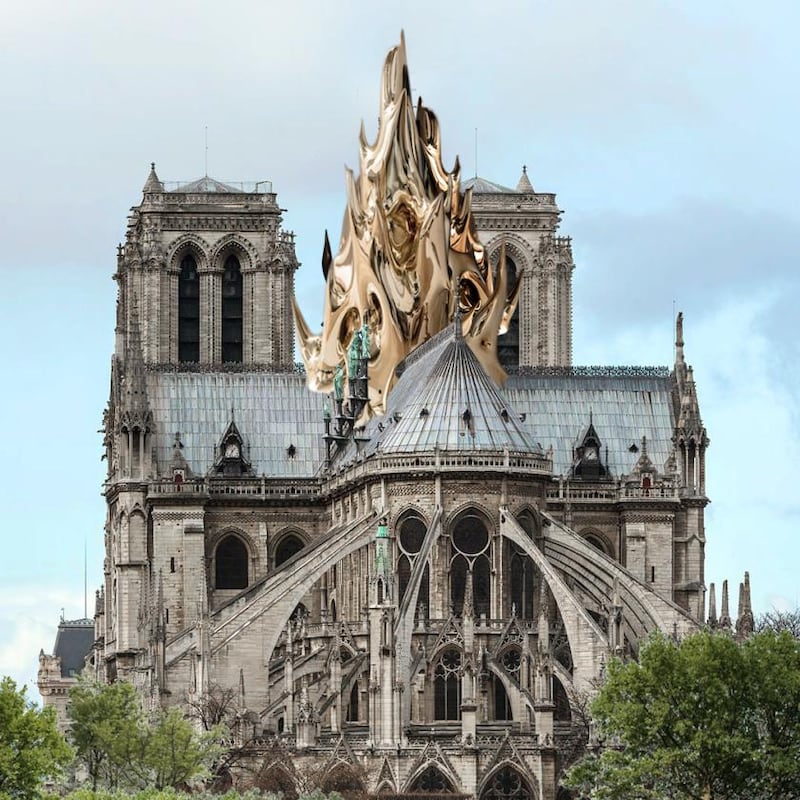
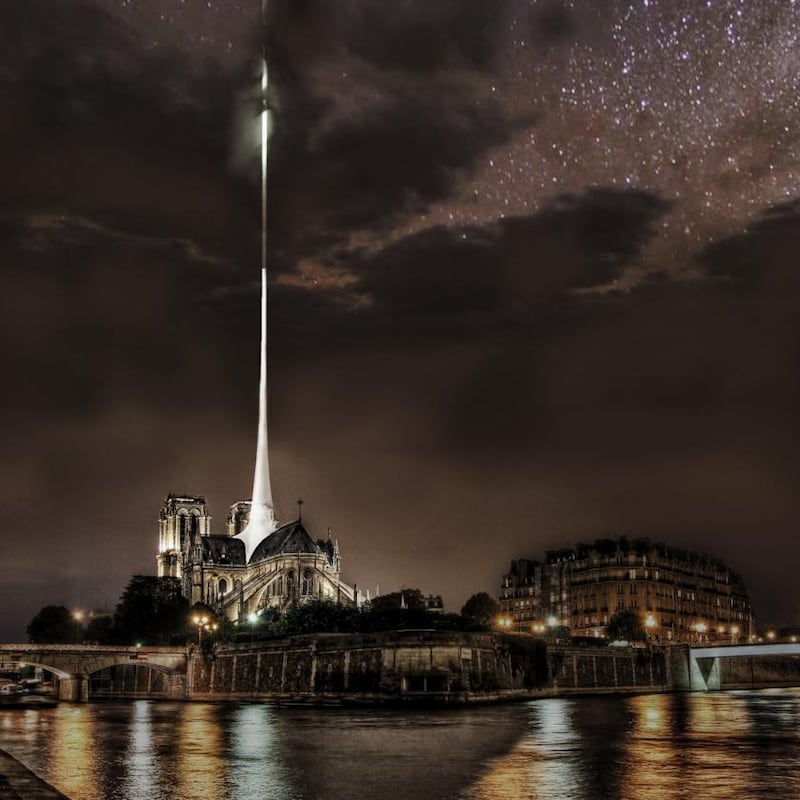
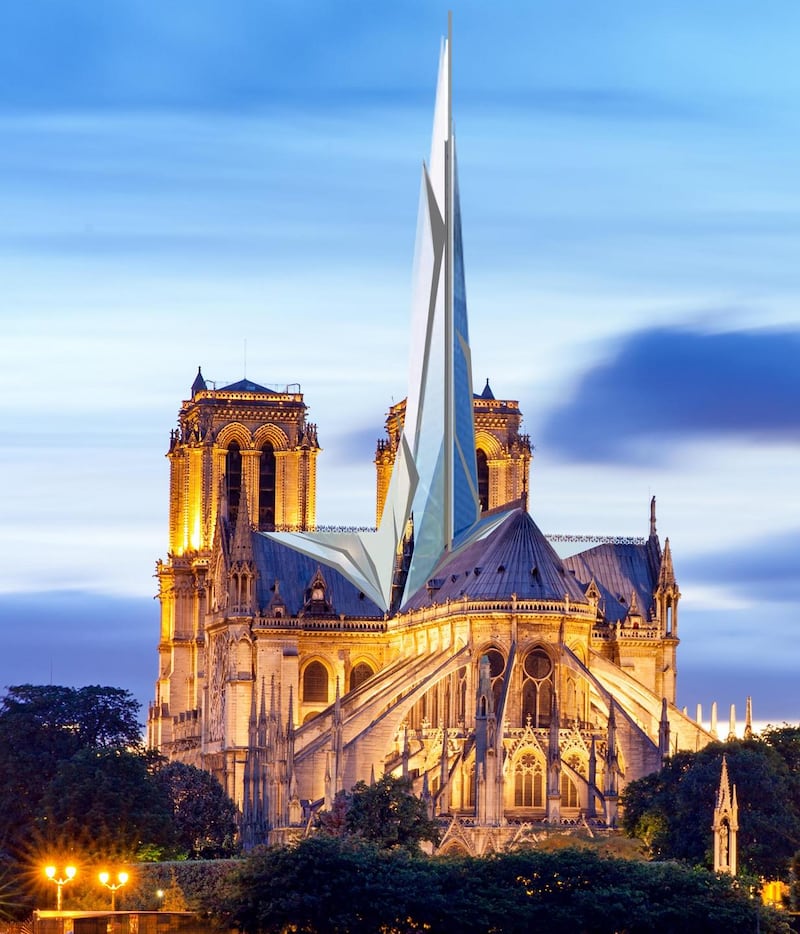
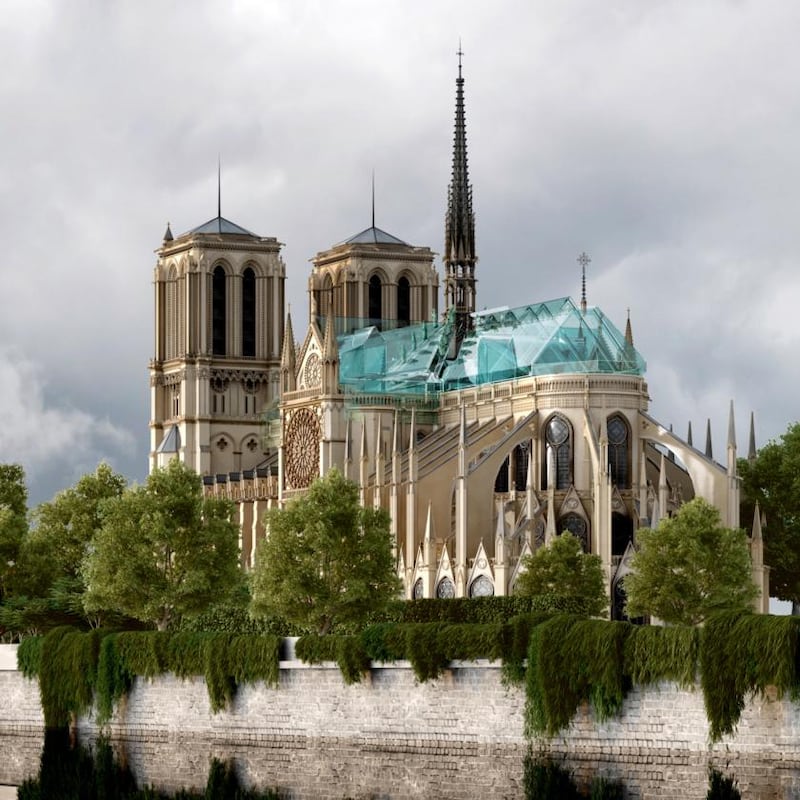
Several designers say that their designs are merely artistic responses to the shock of the fire. But some also hope their plans will be chosen. Two days after the fire, the French prime minister, Édouard Philippe, said there would be an international competition for a spire to replace the one designed by Eugène Viollet-le-Duc that was destroyed. "This is obviously a huge challenge, a historic responsibility," Philippe said.
No details of the proposed contest have yet been released.
President Emmanuel Macron said last month he was not opposed to a "a contemporary architectural gesture" that could make Notre-Dame "even more beautiful". But many in France have called for Viollet-le-Duc's spire to be restored as it had been built. Last Thursday the daily newspaper Le Figaro published a survey suggesting that 55 per cent of French people wanted the spire restored to its original form, and several politicians have pushed for an identical replacement.
On Friday the French parliament began to fast-track the cathedral's restoration, with a Bill that will exempt donations from tax, and allow exemptions from environmental and heritage rules for the project, among other measures, in a move that could help Macron reach his goal of completing the task before the Paris Olympics, in 2024.
In response, more than 1,100 architecture professionals and art historians published a letter in Le Figaro on April 29 calling on the government to “take time to find the right way” to restore the structure and ensure that heritage laws were respected.
Franck Riester, the French culture minister, told parliament on Friday that the restoration would “not be hasty” and that the government would listen to critics of the proposed law.
There is no way we'll get to a consensus and an idea that everyone is happy with. Definitely not in France
No major architect has yet issued a proposal for how they would rebuild Notre-Dame, but several said they would consider entering a competition when details were announced.
"We'd certainly think about it," Stephen Barrett, a partner at the London-based practice of the architect Richard Rogers, says. Rogers was one of the architects who designed the Pompidou Centre in Paris.
Barrett says the five-year deadline is unrealistic unless a new spire is constructed elsewhere, using modern lightweight materials, and then dropped into place. But that is “not in the spirit of a medieval cathedral, which took decades and involved a lot of craft”.
Barrett says the most interesting designs he has seen so far involve opening up the roof and creating a new public space. Those include turning the structure into some kind of garden with trees, echoing the lattice of ancient timber beams that used to make up the cathedral’s attic and that were known as the Forest.
“That process of democratising space is something we like and have done before,” Barrett says, although he speculates that the weight of trees could be too much for the cathedral.
Several designs have appeared online that look to create gardens. The greenhouse design was created by the Paris-based Studio NAB and would include beehives in the glass spire. Those plans are a nod to the beehives that have long been kept on Notre-Dame's roof – and which survived the fire. The honey produced has traditionally been given to the poor.


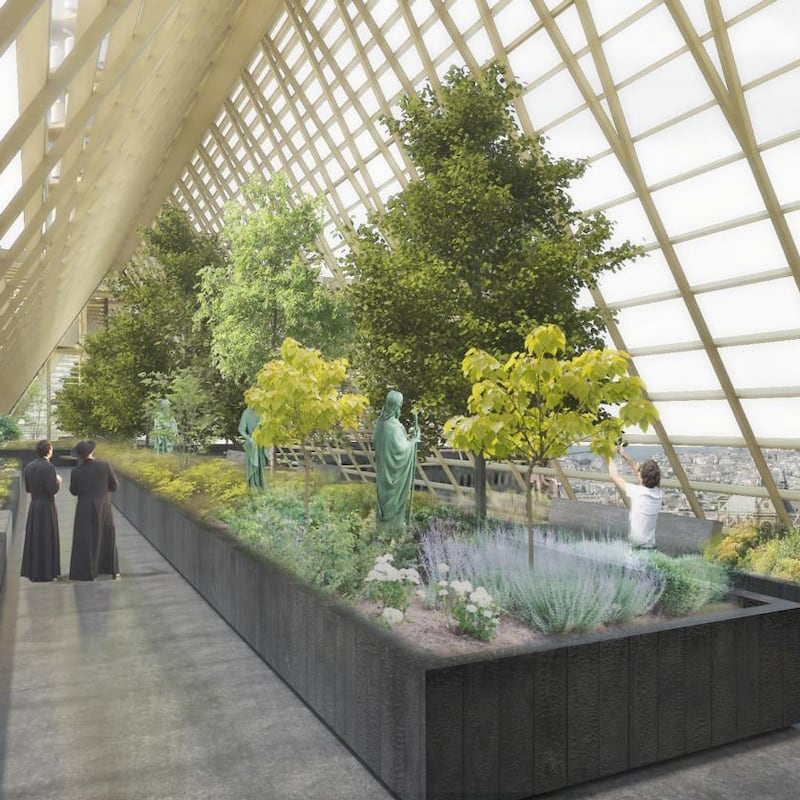
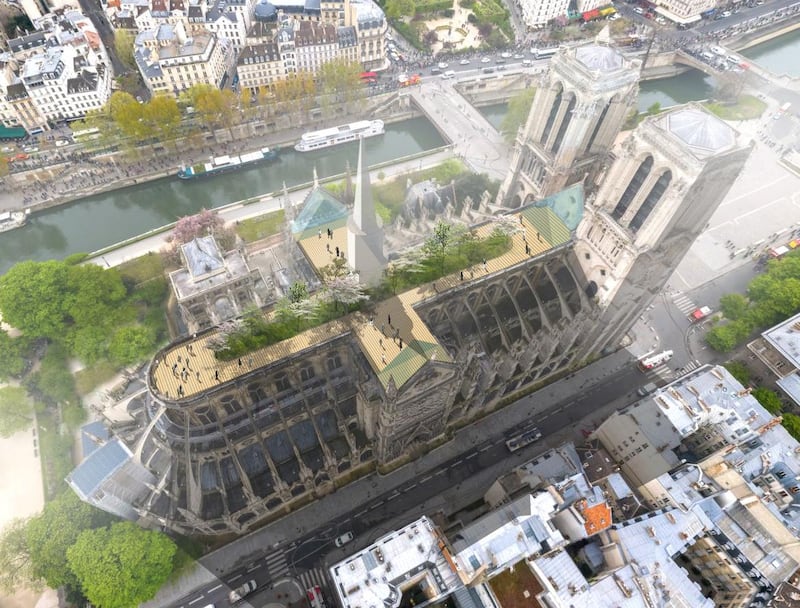
Clément Willemin, a director at a French landscape-architecture firm, posted on Instagram his idea to turn the cathedral's roof into a garden with views across Paris "dedicated to all the species of animals and plants that we have been erasing off the planet."
Willemin says that a love of nature and a desire to protect the environment are concerns that unite people across the world. “In that way, it is our one and only universal religion,” he says.
Like most of the plans, Willemin’s idea has received a mixed response. But he predicts that whatever idea is chosen will cause upset. “There is no way we’ll get to a consensus and an idea that everyone is happy with. Definitely not in France,” he says.
Lehanneur, who has designed the flame spire, notes that most of the landmark buildings in Paris have been contentious when they were constructed, including the Eiffel Tower, the glass pyramid at the Louvre and the Pompidou.
The objections never last long, Lehanneur says. “After one or two decades the most conservative people not only accept them; they want to defend them.” – New York Times












